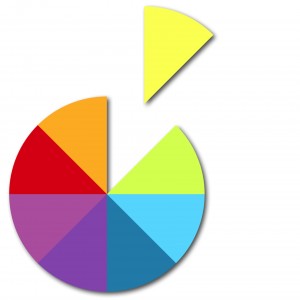Recently I re-launched The MAKING Art Making MONEY Semester. P.S. Enrollment is currently closed.
And I heard from a number of artists from around the globe who eagerly wanted to enroll but said that they didn’t have enough time or money.
- Not enough time? That’s no excuse because unlike other courses, The Semester is self-paced and it does not end, it’s on-going. Students receive unlimited access and can participate according to their schedule and commitments.
- Not enough money? That’s no excuse either because if you actually do the work, The Semester is an investment that could pay for itself many times over.
If you make art, then making money is just as easy. Oh I can hear it now. “No it’s not!”
Yes it is. Stay with me. I’m not just promoting The Semester, which I obviously believe in.
I’m going to teach you how I first made significant money with my art.
I shared with a number of applicants to The Semester, a story about a time when I really wanted to attend an expensive painting workshop with my mentor Gregory Kondos in the south of France.
I was working for a music distribution company, MP3 files and Napster basically annihilated our company almost overnight.
I was left with no job, no prospects, and a sizable 50% non-refundable deposit for this workshop. Did I mention that my seven-year relationship had ended abruptly and that I was emotionally devastated?
Thankfully, my co-workers encouraged me to take the trip and to find the money and make it happen.
I could stay home and cry or I could go make art and make money.
I decided on the later and it was one of the very best decisions I have made in my life.
I put out a box of overpriced chocolate in my office cubicle with a sign that said, “Send a kid to France.”
Even though my co-workers where loosing their jobs, they bought my overpriced chocolate and that paid for all of my art supplies.
I wrote a letter to everyone my in my small network offering them the opportunity to receive a small painting that I would create just for them in the south of France. (See above.)
I included a self-addressed stamped envelope with the payment due date.
The self-addressed stamped envelopes began to arrive, some with requests for paintings, and some with just a few dollars and well wishes.
I basically created a Kick Starter campaign before it existed.
This simple sales and marketing effort not only funded my trip to the south of France, it funded a side trip to England to see my family and I made profit.
It was my first taste of making art and making money.
My patrons were absolutely delighted with the paintings that I created for them and some bought more.
It was so easy to execute because I was going to be painting anyway and I was actually more inspired by thinking of who was going to receive each painting.
What did this marketing effort cost me? Well, I had to buy:
- some paper
- envelopes
- stamps
It helped me tremendously to have the support of a friend who encouraged me and who let me use his fancy color printer.
There’s absolutely nothing stopping you from doing the same thing, today.
- Determine what amount of money you would like to make.
- Create a product a.k.a. Art.
- Make something easy to execute on.
- Create something that will add value for your customers in some way. You can just personalize it.
- Choose a price point that your network will easily say yes to.
- Do the math. I only needed ten people to say yes to fully fund my trip.
I recommend first mailing a letter and following up via email with a PayPal payment link. You now have the advantage of technology, so use both.
Be clear on what you want, when you want it, how they will benefit from what you will be making for them, and why you want it, maybe you want to enroll in The Semester?
Not sure what to write? No need to struggle with copywriting. I have an easy fix.
- Imagine that you’re sitting across from someone who you think would be receptive.
- Tell them what you’re doing, why you’re doing it, what you would like to do for them.
- Record this imaginary conversation, then transcribe, and edit it.
Your message will come across in a way that feels authentic, natural, clear, and concise.
Commit to a date to send the letter and ask a friend to hold you accountable.
Just see what happens. Treat it as an educational experiment.
The worst thing that will happen is that you will learn vital lessons about the selling and marketing your art. You’ll learn about:
- Product Development
- Pricing
- Positioning
- Marketing
- Selling
- Project planning
- Accounting
- Follow through
Essentially what I learned from funding my trip to France were the basic mechanics of making art and making money, which I just repeated until I got to the place where I was a full-time Artist.
You can do this. It’s just about committing and taking planned and scheduled action.
Someday is today. Do it now and tell someone who cares what you are going to do and by when. The only thing stopping you is an excuse and Artists Who THRIVE don’t do excuses 😉
p.s. I would never write this letter today but who cares. It worked! 
What will you create and by when? Share below.
About Ann Rea
Ann Rea is a San Francisco based Artist and Entrepreneur. Her inspired business approach to selling her paintings have been featured on HGTV and the Good Life Project, in Fortune, and The Wine Enthusiast magazines, profiled in the book Career Renegade. Rea’s artistic talent is commended by American art icon, Wayne Thiebaud, and she has a growing list of collectors across North America and Europe.










